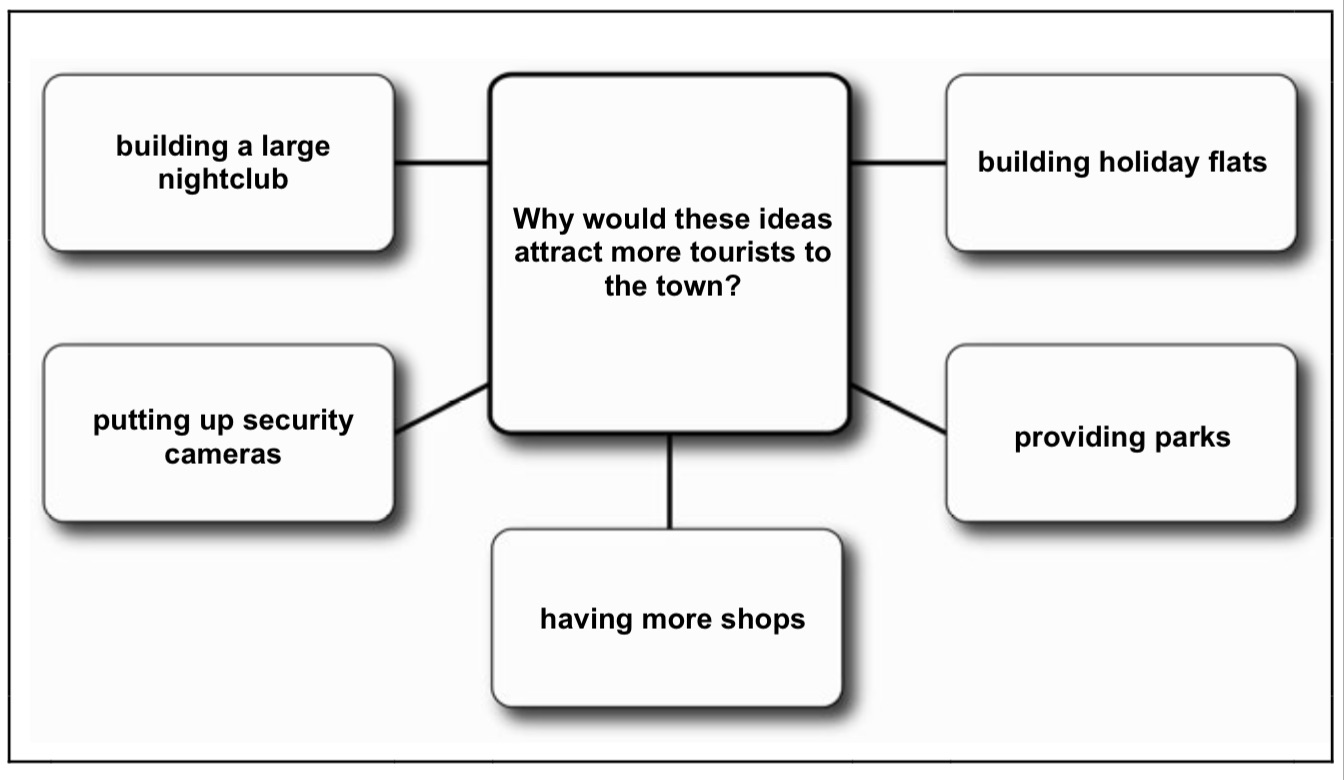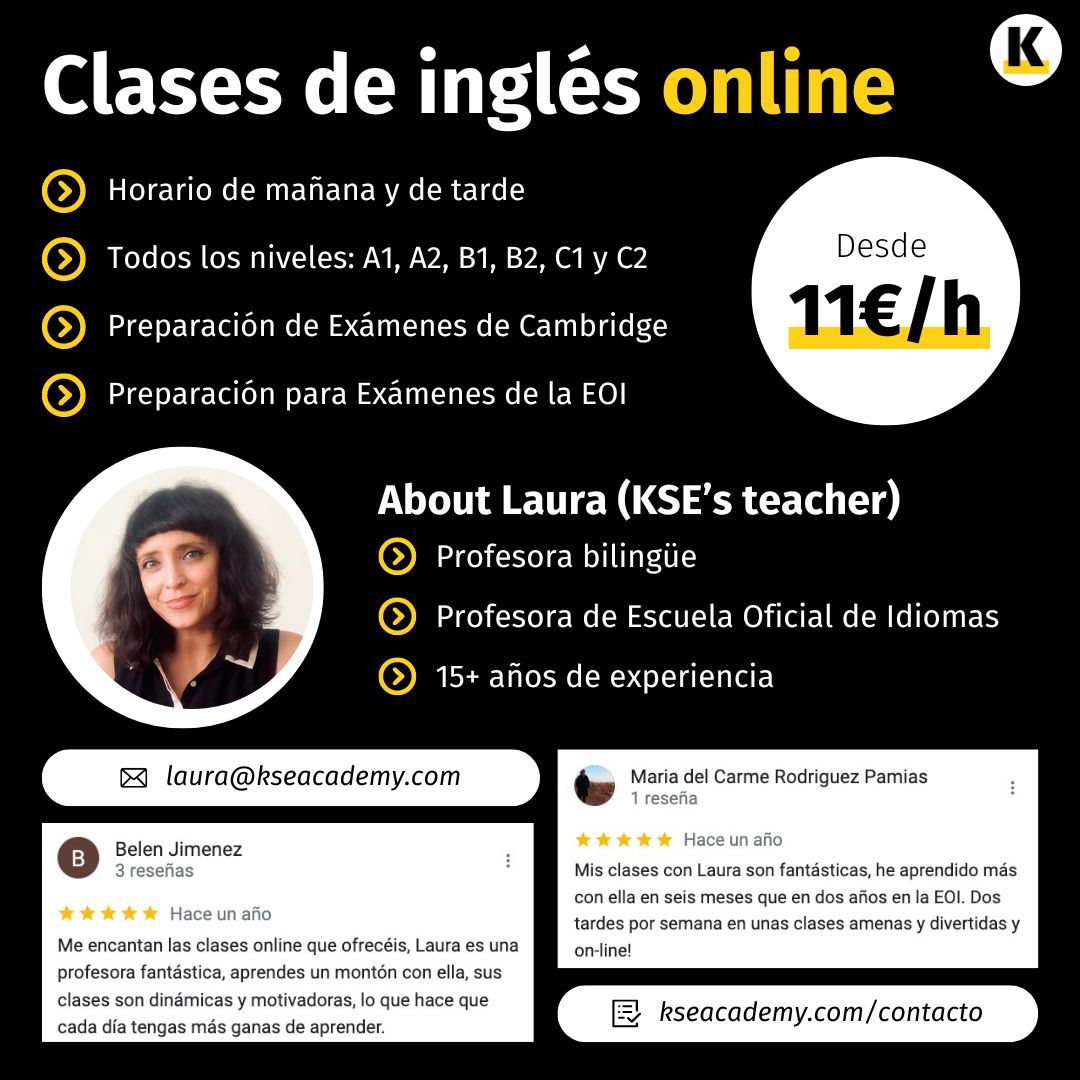In a different article, I have already told you about the B2 FCE Speaking Test (officially called B2 First (FCE), by the way). But in this post I will focus more specifically in FCE Speaking Part 3, and I will give a detailed description of this part, which is very popular, just like I did with Part 1 and Part 2. In this part, as we will see in a minute, both candidates have to interact in order to succeed.
- Description of FCE Speaking Part 3
- Top 10 Tips for FCE Speaking Part 3
- Video of a Real FCE Speaking Part 3
Description of FCE Speaking Part 3
This part of the test comprises 1 discussion divided into 2 parts. First, the examiner will describe a situation to you and your partner, and he/she will offer you different options to discuss. Second, after the brief discussion, you and your partner will have to decide on the best option for the situation proposed in the first part of the discussion.
Timing of the B2 First Speaking Part 3
This part of the test is supposed to last 4 minutes, or 5 minutes if the speaking task is carried out by 3 candidates. The main elements of the task are the following:
- Examiner’s instructions (total): 1 minute
- Pair discussion of the options: 2 minutes (3 minutes for groups of 3 candidates)
- Reaching a conclusion: 1 minute
Instructions and Possible Candidate’s Response
When sitting any speaking exam, it is important to know what to expect in terms of timing, tasks, instructions, content and so on. For this reason, it is absolutely essential to know the instructions you will receive during the B2 FCE’s speaking test. So let’s see what they are for FCE Speaking part 3 with an example:
Examiner’s initial instructions
Now, I’d like you to talk about something together for about two minutes.
I’d like you to imagine that a town wants more tourists to visit. Here are some ideas they’re thinking about and a question for you to discuss. First you have some time to look at the task.
(The examiner places the following picture in front of you and allows you 15 seconds to read the question and study the options.)

Candidates’ discussion (2 minutes)
– Candidate A: Shall I go first?
– Candidate B: Sure, go ahead.
– Candidate A: I believe that this option (pointing), «building a large nightclub», will attract tourists, especially young ones who enjoy partying and going out with friends, don’t you think?
– Candidate B: Yes, I think so, too. However, it might not be the best type of tourism, because it can disturb neighbours and residents. How abouthaving more shops?
– Candidate A: Oh, that’s a great idea. If the city offers a good shopping experience, many people will be attracted to it, which I guess is quite positive for everyone. Wouldn’t you agree?
– Candidate B: Yes, of course. Maybe that option could go hand in hand with building holiday flats because. The way I see it, you want tourists to spend more time in your city. So if you have plenty of shops and accommodation, it’s the perfect combination, right?
– Candidate A: Yeah, you’re absolutely right. But what do you think about the other two options? (pointing)? Do you think they’re a good idea?
– Candidate B: Well, if you ask me, putting up security cameras isn’t very appealing to anyone. But I suppose parks can be attractive, but I’m not sure how much exactly. What’s your take on those two options?
– Candidate A: As you said, security cameras are not appealing at all. As for parks, maybe they are a good thing for residents, but not for tourists, particularly.
Examiner’s second set of instructions
The examiner will interrupt the conversation above and say:
Thank you. Now you have about a minute to decide which idea would be best for the town.
Candidate’s making a decision
– Candidate B: Well, given our previous comments, I would say that the two best options would probably be the shops and the holiday flats, don’t you think?
– Candidate A: Yeah, well, I do agree with you on having more shops, but I think that building a nightclub is more important than holiday flats.
– Candidate B: Okay, I see what you mean, but I don’t think the same way. Shall we stick to having more shops then?
– Candidate A: Yes, sure, I also think it’s the best one. So do we have an agreement?
– Candidate B: Yes, we do.
Examiner’s final instructions
Thank you. Can I have the booklet, please?
Basic observations for B2 First (FCE) Speaking Part 3
If you read the task above carefully, you will notice the following features in FCE Speaking part 3:
- The candidates are asked to interact with each other rather than speak by themselves.
- It is essential to express and ask for opinions, agree and disagree with the other candidate, and change the subject.
- The examiner’s question is written in the middle of the booklet he/she places in front of the candidates.
- Candidates are encouraged to discuss the different options.
- Candidates are expected to have a conversation, sharing opinions and asking questions.
- The expressions in bold are useful words or phrases to use in any discussion.
- It is advisable to reach an agreement with your partner, but it is not absolutely necessary.
- The most important thing is to show the examiner that you are discussing and working towards a final decision.
FCE Speaking Part 3: Useful Phrases to Engage in a Discussion
In this section, we’ll go over some useful phrases that you can use in any discussion like the one in this part of the B2 Speaking. Let’s see:
- Starting your discussion
- Shall I start? / Yeah, go on.
- Shall I go first? / Of course, go ahead.
- Is it okay if I start? / Sure, no problem.
- Would you like to go first? / Yes, why not?
- Expressing your opinion
- I believe/think that…
- In my opinion,…
- The way I see it,…
- If you ask me,…
- I would say that…
- It seems to me that…
- In my view…
- As far as I’m concerned,…
- Asking for your partner’s opinion
- statement, don’t you think/agree?
- statement, wouldn’t you say so?
- statement , wouldn’t you agree?
- statement, right?
- Do you think…?
- Do you believe that…?
- What do you think about…?
- How about…?
- What about…?
- What’s your take on…?
- Agreeing with your partner
- I (totally) agree with you.
- You’re dead right.
- That’s (absolutely) true.
- You’re (absolutely) right.
- That’s a great idea.
- I couldn’t agree more.
- Yes, I see what you mean.
- I see it that way, too.
- Yes, of course.
- I think so, too.
- Disagreeing with your partner
- I’m afraid I don’t see it the same way.
- I’m sorry but I have to disagree.
- You may be right, but I have a different view.
- That might be true, but I’m not sure I agree with you.
- I’m sorry, but I don’t agree.
- Changing the subject
- As for + one of the options
- As to + one of the options
- In relation to + one of the options
- As regards + one of the options
- Regarding the question of the task,
- With regard to + paraphrased question
- Concluding the discussion
- I believe we have an agreement, don’t we?
- So, do we have an agreement?
- Shall we stick to…?
- Shall we agree on..?
Top 10 Tips for FCE Speaking Part 3
- Have a clear discussion, not 2 monologues: it is common for candidates to think that the more they speak, the better. That’s not correct. It’s what you say that matters, and in this part you’re expected to discuss, not to speak by yourself.
- Justify your opinions: expressing your opinions is not the only thing that matters; justifying them is just as important. For one thing, you are showing the examiner that you can justify your opinions in English, and for another, you are giving your partner material to work with throughout the conversation. Let’s say that your justifications feed the conversation on hand.
- Try to speak about all the options: while this is not compulsory, if you focus on only one option, you will have less of a chance to show how well you can interact in a conversation. That’s why I always recommend jumping from one option to another, so that you get more opportunities to agree, disagree and express your opinions.
- Work with your partner: your partner is not your enemy. You will be assessed separately, so you must see him/her as your ally.
- Help your partner: if your partner is struggling to find the appropriate words or some ideas to express, you can give him/her a hand by stepping with some ideas or the words you think he/she is looking for. Not only will this help the conversation itself, it will also show the examiner that you have good communication skills.
- Step up your interaction skills: most of the score in this part of the speaking is based on your ability to interact, which means that you have to ask for opinions and be able to agree or disagree with your partner. For this reason, you should know a set of expressions to do so that will impress the examiner. So try to avoid the typical «What do you think about…?» or «I agree/disagree», and go for something a little more advanced, such as «wouldn’t you agree?», or «I’m afraid I don’t hold the same opinion.»
- Keep your turn short: remember, we are discussing different options with the other candidate, not reciting a monologue. If you spend 1 minute speaking non-stop, you are not interacting, which shows poor communication skills on your part.
- Stick to the topic: make sure that you stick to the topic and answer exactly what the examiner asked.
- Finish your statements with a question or a question tag: finishing your statements with a questions is a very natural way of keeping the conversation flowing, which is the whole point in this part.
- Address your partner: remember that you are having a conversation with someone. That someone is your partner, not the examiner, so be sure to look at the other candidate when you speak.
Bonus Tip
- Be polite & smile: you’d be surprised by what human beings can achieve with politeness and a smile. A positive, cheerful attitude will make you cause a better impression on the examiners and your partner, plus it makes you, to some extent, a better communicator.
Video of a Real FCE Speaking Part 3
It is always useful to see a real exam, so here’s a video of the third part of the FCE speaking test. But remember, these candidates are not perfect, so try to learn from their mistakes rather than make them yours!
For more information about the First exam (previously known as FCE), visit Cambridge English: First / What’s in the exam?
If you enjoyed this post, please comment and share! And don’t forget to keep up with KSE Academy’s latest news by following me on Facebook, Twitter and YouTube!
And don’t forget to keep smiling!

